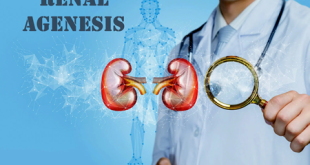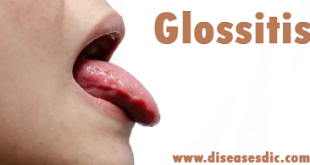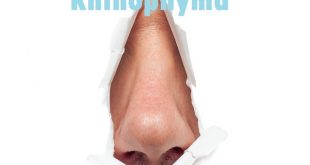Definition
Rosacea (roe-ZAY-she-uh) is a common skin condition that causes redness and visible blood vessels in your face. It may also produce small, red, pus-filled bumps. These signs and symptoms may flare up for a period of weeks to months and then diminish for a while. Rosacea can be mistaken for acne, an allergic reaction or other skin problems. Rosacea can occur in anyone. But it most commonly affects middle-aged women who have fair skin.
Rosacea
Types
- Type one, known as erythematotelangiectatic rosacea (ETR), is associated with facial redness, flushing, and visible blood vessels.
- Type two, papulopustular (or acne) rosacea, is associated with acne-like breakouts and often affects middle-aged women.
- Type three, known as rhinophyma, is a rare form that is associated with thickening of the skin of your nose. It usually affects men and is often accompanied by another subtype of rosacea.
- Type four is ocular rosacea, and its symptoms are centered on the eye area.
Epidemiology about Rosacea
In the United States, the prevalence of rosacea seems to be on the rise and in the United Kingdom, the prevalence is 1.65 per 1000 person-years. There is a paucity of epidemiological data on rosacea, with reported prevalence rates ranging from as little as 0.09% to as much as 22.00%. The condition is most common among individuals aged 30 to 50 years and women are two to three times more likely to be affected than men, with women of menopausal age at a greater risk still.
Risk factors
Anyone can develop rosacea. But you may be more likely to develop it if you:
- Are a woman
- Have fair skin, particularly if it has been damaged by the sun
- Are over age 30
- Smoke
- Have a family history of rosacea
Causes
The cause of rosacea is unknown, but it could be due to a combination of hereditary and environmental factors. Rosacea is not caused by poor hygiene.
A number of factors can trigger or aggravate rosacea by increasing blood flow to the surface of your skin. Some of these factors include:
- Hot drinks and spicy foods
- Alcohol
- Temperature extremes
- Sunlight or wind
- Emotions
- Exercise
- Cosmetics
- Drugs that dilate blood vessels, including some blood pressure medications
Symptoms of rosacea
Typical signs and symptoms of rosacea include
- Facial flushing,
- Blushing,
- Skin redness (erythema),
- Burning,
- Red bumps and pustules,
- Small cysts, and
- Thickening of the facial tissue, especially the nose.
The symptoms and signs of rosacea tend to come and go
Rosacea affected person
Complications of rosacea
Ocular rosacea
If rosacea affects the eyes, the eyelids can become inflamed (blepharitis). Treatment involves a daily application of topical antibiotic creams, and oral antibiotics.
Self-esteem, embarrassment, and frustration
Even though rosacea is not a life-threatening condition, its effect on appearance often leaves the patient embarrassed, frustrated, anxious, and lacking in self-confidence.
Patients who are well informed about rosacea tend to cope better because they are prepared to deal with complications or recurrences. Emotional health is generally restored when symptoms are successfully addressed – this is more likely to happen if individuals comply with long-term medical therapy and take measures to minimize the factors that aggravate the condition.
It is important for individuals to talk to a doctor if they experience intense feelings of distress, embarrassment, or frustration. Talking to a counselor or medical social worker is also advisable.
Diagnosis and test
- There is no clinical test for rosacea. A doctor reaches a diagnosis after examining the patient’s skin, and asking about symptoms and triggers. The presence of enlarged blood vessels will help the physician distinguish it from other skin disorders.
- The presence of a rash on the scalp or ears usually indicates a different or co-existing diagnosis. Rosacea signs and symptoms are mainly on the face.
- Early diagnosis and subsequent prompt treatment significantly reduces the risk of rosacea’s progression. If the doctor suspects there may be an underlying medical condition or illness, such as lupus, blood tests may be ordered. The doctor may refer the patient to a dermatologist.
Treatment and medications
There is no cure for rosacea. However, there are various treatments which can relieve the signs and symptoms. A combination of medications and lifestyle changes generally give the best results. The doctor may prescribe camouflage creams that mask blemishes on the skin.
Medications
Treatment may involve a combination of prescribed topical medications (applied to the skin) and oral drugs (swallowing pills, tablets, or capsules). These include:
Topical medications – these help reduce inflammation and redness and are applied to the skin either once or twice a day. They are commonly used in combination with some oral medications. Antibiotics (metronidazole), tretinoin, benzoyl peroxide, and azelaic acid are examples of commonly prescribed topical medications.
Oral antibiotics – for the treatment of rosacea, oral antibiotics are prescribed more for their anti-inflammatory properties. Oral antibiotics tend to give faster results than topical ones. Examples include tetracycline, minocycline, and erythromycin.
Isotretinoin (Accutane) – this oral medication is sometimes used for severe cases of inflammatory rosacea if other treatments have not worked. Isotretinoin is a powerful drug that inhibits the production of oil by the sebaceous glands. As side effects may be severe, the patient needs to be monitored closely.
Blephamide – a specific type of steroid eye drop which is sometimes prescribed for patients with ocular rosacea (eye symptoms). Eye drops are applied daily for 3 days to 1 week, followed by a break or tapered use.
Tetracyclines – these are sometimes prescribed for patients with symptoms of ocular rosacea. Doxycycline helps improve dryness, itching, blurred vision and photosensitivity (sensitivity to light).
Laser treatment
- For patients with visible blood vessels (telangiectasia) laser treatment, which uses intense pulsed light, can be used to shrink them. This will be done by a dermatologist. Although the procedure may cause some pain, most patients can tolerate it without the need for an anesthetic.
- Laser treatment can sometimes cause bruising, crusting of the skin, swelling, tenderness, and, very rarely, infection. These complications will usually disappear within a few weeks, although if it becomes infected it may require antibiotics.
Prevention of rosacea
There are some things you can do to reduce symptoms and keep rosacea from getting worse.
Get any bothersome symptoms under control: A dermatologist can prescribe treatments to reduce redness and any breakouts.
Find your triggers: One of the most important things is to learn what triggers your flare-ups, and then avoid them. It can help to keep a diary of what you were eating, drinking, and doing on days that the rosacea appeared. Take the diary to your next doctor visit, and discuss what you can do to help control the disease.
Protect your face: Stay out of the sun between 10 am and 4 pm. When you are outdoors, protect your face by wearing a wide-brimmed hat or visor. Use a sunscreen that is rated SPF 30 or higher every day. If your skin is dry, find a moisturizer with sunscreen.
Be gentle with your skin: Use skin care products for sensitive skin, and avoid any products that scratch or irritate your skin. Try not to rub or scrub your skin.
Take care of your eyes: Gently wash your eyelids with a product made for the eyes. Apply a warm, wet cloth several times a day. Use artificial tears if your eyes feel dry. Or talk to your doctor about medicine you can put into your eyes
 Diseases Treatments Dictionary This is complete solution to read all diseases treatments Which covers Prevention, Causes, Symptoms, Medical Terms, Drugs, Prescription, Natural Remedies with cures and Treatments. Most of the common diseases were listed in names, split with categories.
Diseases Treatments Dictionary This is complete solution to read all diseases treatments Which covers Prevention, Causes, Symptoms, Medical Terms, Drugs, Prescription, Natural Remedies with cures and Treatments. Most of the common diseases were listed in names, split with categories.







